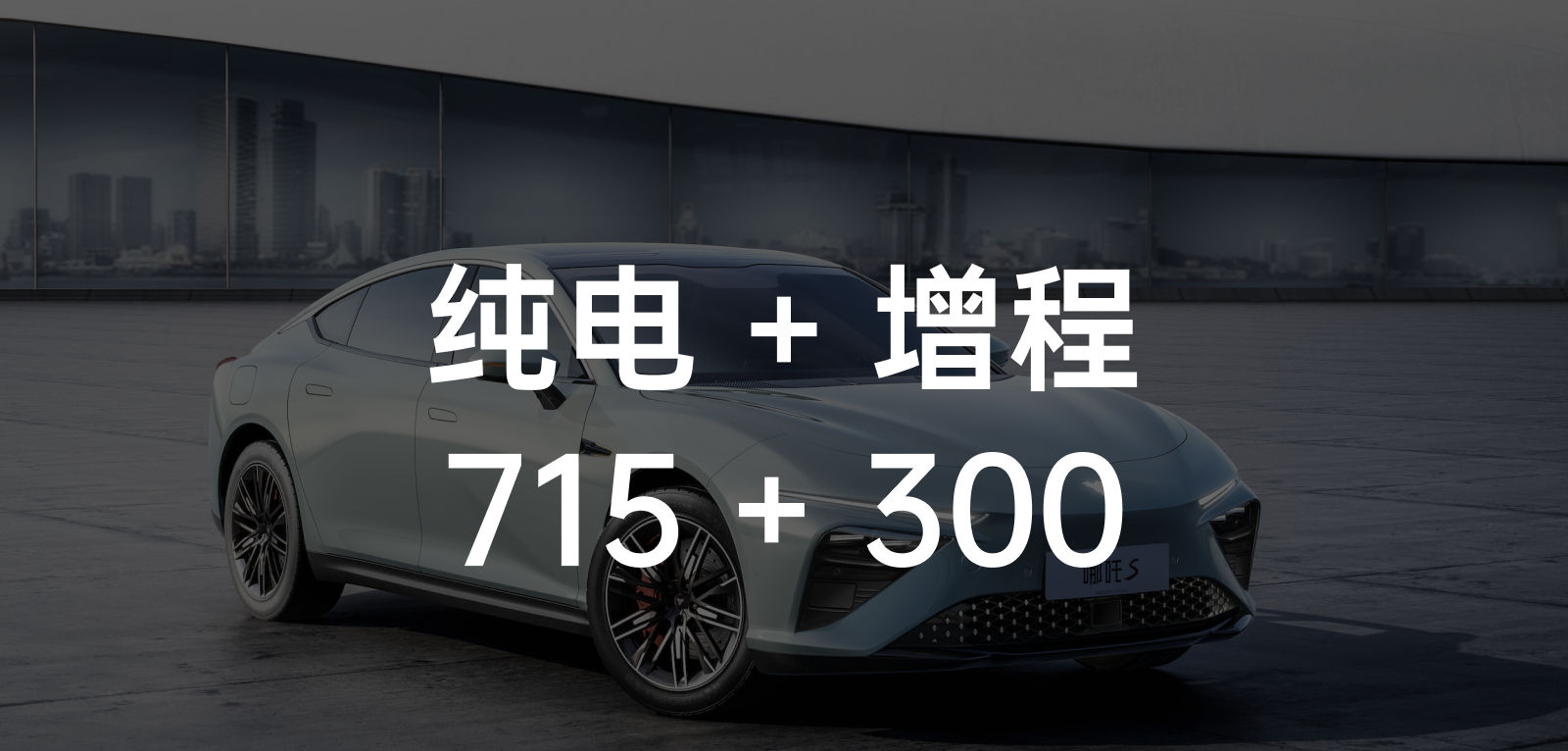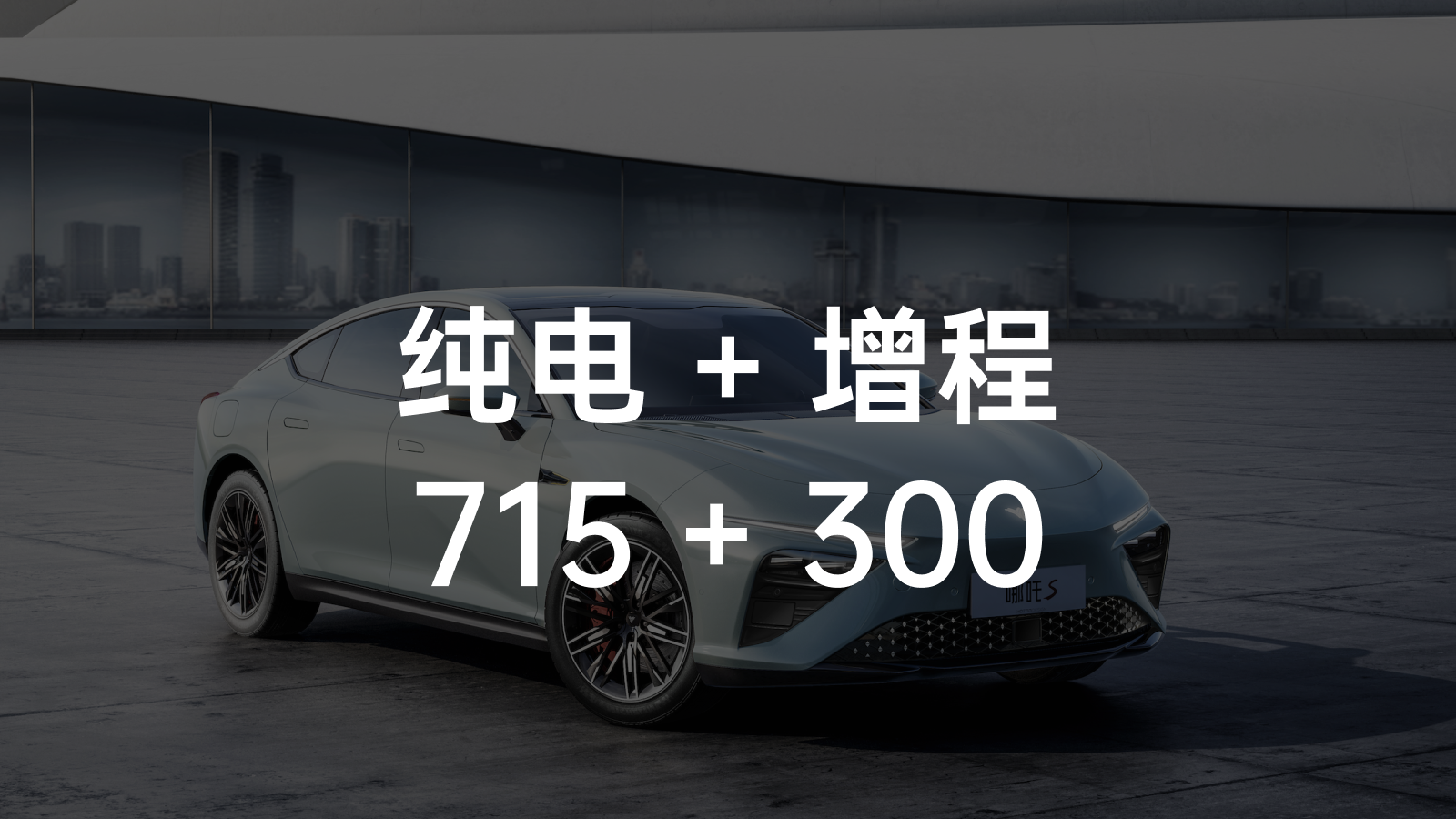
Today, I attended the “Tiangong Battery” Technology Seminar of NETA S, and then participated in the small-scale media sharing meeting of NETA S. I gained a lot of content. There are quite a lot of information points, covering the “Tiangong Battery” of NETA S and some information that NETA S has not yet disclosed.
On the two-wheel-drive rear-wheel-drive model of NETA S, the CLTC range is 710 km, but this may change a little in the future and will be retested; while the range of the extended-range pure electric NEDC on the NETA S has reached directly to 300 km, and this should be the largest extended-range pure electric range currently.
During the communication, Zhang Honglei, the executive deputy dean of NETA Automobile, said the following sentence when answering questions about battery safety:
The product must have a PPM value (defective rate statistics). If you want to reach a million level, it is basically impossible from the perspective of the product to completely avoid spontaneous combustion. Therefore, what automakers need to do is how to prevent thermal diffusion when (battery cells, batteries) fail.
He did not talk about technology lightly, but directly pointed it out. Of course, there is more than that. Through communication with NETA official technical personnel, my expectation for NETA S, this product that is striving for the high-end market, has been deepened.
FAQs
I put this interesting and mostly first-time disclosed content at the front, and the latter part of the article is about the explanation of the safety of power batteries and NETA’s “Tiangong Battery”.
Extended-range pure electric range of 300 km in the extended version?
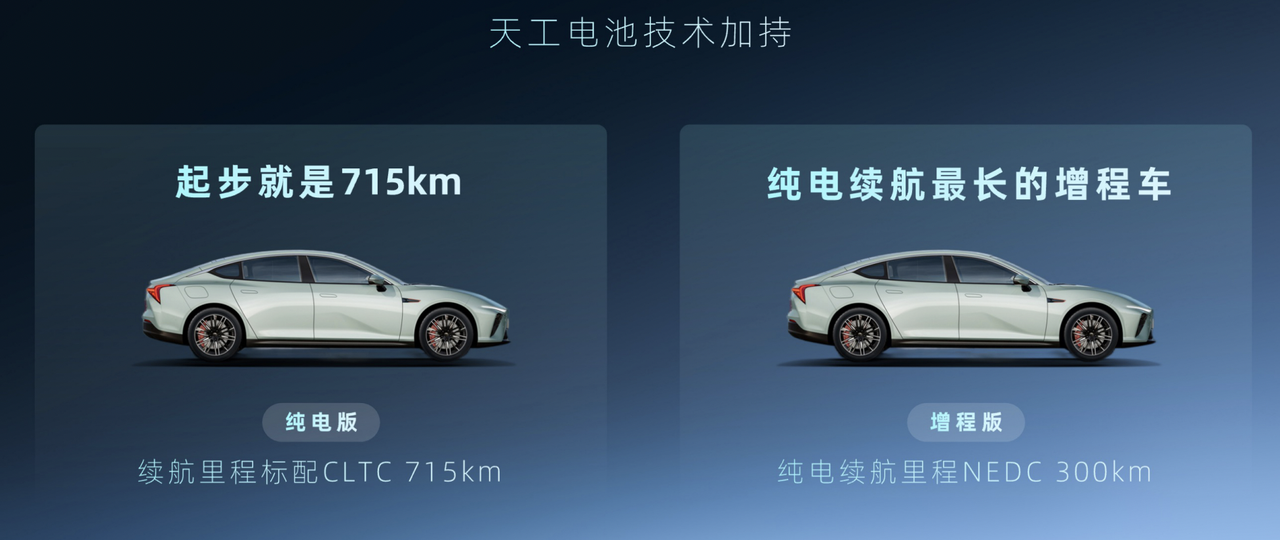
On the two-wheel-drive rear-wheel-drive model of NETA S, the CLTC range is 710 km, but this may change a little in the future and will be retested; while the range of the extended-range pure electric NEDC on the NETA S has reached directly to 300 km, and this should be the largest extended-range pure electric range currently.
As for why the extended version of NETA S chose a pure electric range of 300 km, the official explanation is very interesting. Essentially, the engine can be completely regarded as a “long-distance backup battery”. In NETA’s words, it is called the “non-unplug” usage experience.
First of all, NETA has integrated the sales of internal pure electric models and the sales survey of the market pure electric models. It was found that the range of most pure electric vehicles is mainly 400 km. These users generally do not drive more than 60 km per day, and will go to charge when the battery SOC is close to 30\%, so the actual mileage of “one tank of electricity” per week is about 300 km.For the extended-range version, considering the battery limit SOC is not a concern, the car is equipped with a large battery that supports up to 300 km of driving on pure electricity, satisfying the daily commuting needs for the majority of users. The gasoline engine is only used during long-distance travel.
In addition, many people think that the extended-range version is a manufacturer’s choice to reduce battery costs because the industry predicts that battery technology will become cheaper as time goes on. However, with recent battery price increases, the cost advantage of the extended-range version has disappeared. Therefore, NETA’s idea is not just to stack batteries with the goal of “1,000 km” of pure electric driving range. Instead, NETA offers both pure electric and extended-range versions with a reasonable range configuration but with the same focus on “driving purely electric” and “not losing charging stations”.
NETA also talked about their view on battery technology roadmap.
Currently, NETA’s pure electric vehicle with a driving range above 600 km uses ternary lithium batteries, while those with a driving range below 500 km use lithium iron phosphate batteries. After the introduction of lithium iron phosphate that does not contain cobalt, the plan is to use them for long-range models with driving range above 600 km. The reason for doing this is not just because of the cost difference but also for the diversified material supply for batteries.
In terms of the extended-range version, due to the requirement of space and range, the car needs to use higher energy density ternary lithium batteries. As for the battery capacity, readers can guess in the comment section.
CTP/CTC are both needed!
After cooperating with CATL, NETA applied CTP (cell to pack) technology in battery pack construction, which eliminates the battery module and increases space utilization, allowing more battery cells to be packed into the same space. As a result, the energy density of the battery system reaches 185 Wh/kg.
As for CTC, it is more mysterious. CATL and NETA won the national 14th Five-Year Plan project last year, and dozens of CTC prototypes have been produced. More information will be released in the future.
NETA believes that there is not much difference in the cell structure between CTP and CTC batteries, but the packaging process is the main difference. CTC requires greater changes in the production line process, and we should see this battery as early as next year. If the life cycle of NETA’s S series products is long enough, this technology should also be used.
Is the Shanhai platform a skateboard platform?
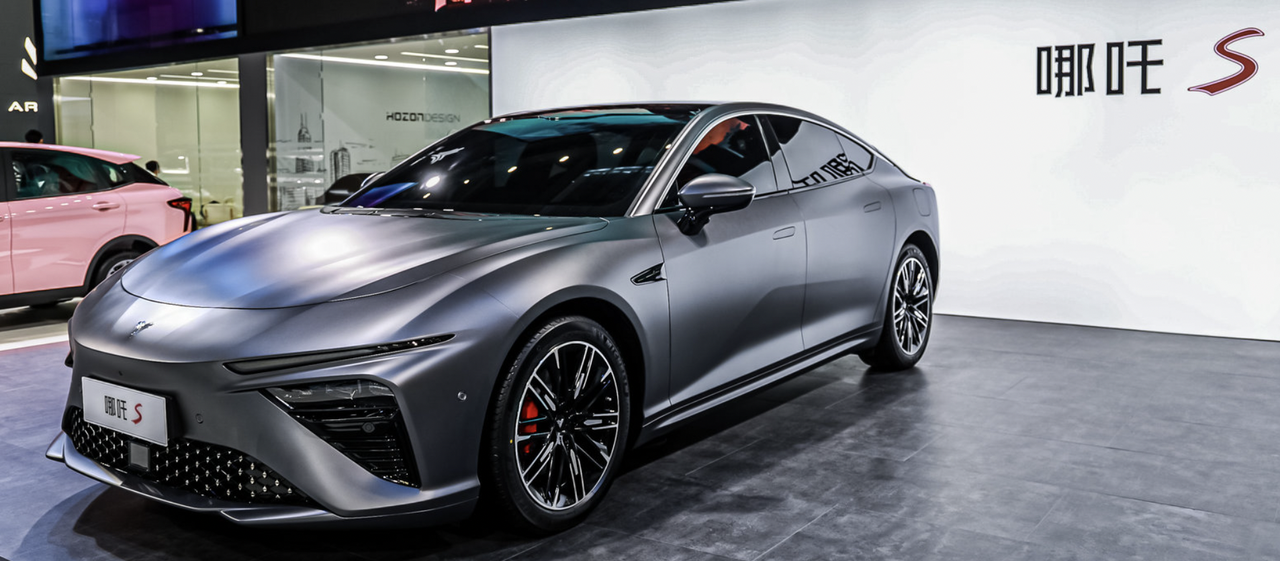 According to NETA’s expression, it is and is not. NETA’s goal for the platform is the skateboard platform. So the current Shanhaima platform can be understood as not a skateboard platform, or as “NETA Skateboard 1.0 version”. The Shanhaima platform will continue to evolve and evolve. For example, CTP-CTC mentioned earlier is a manifestation of this evolution.
According to NETA’s expression, it is and is not. NETA’s goal for the platform is the skateboard platform. So the current Shanhaima platform can be understood as not a skateboard platform, or as “NETA Skateboard 1.0 version”. The Shanhaima platform will continue to evolve and evolve. For example, CTP-CTC mentioned earlier is a manifestation of this evolution.
So why does NETA focus on the skateboard platform?
Firstly, we need to understand what a skateboard chassis is. In my interview with Li Peng, CEO of Youpao Technology, he defined the skateboard chassis as “divided body, combined force”.
This point is also basically in line with NETA Zhang Honglei’s views. NETA believes that from the perspective of the entire vehicle, the design that separates the upper and lower parts will allow for better extension of the skateboard chassis, and a better range of adjustment of wheelbase and track width.
The Shanhaima platform will approach this definition through standardization and modularization. At the same time, Zhang Honglei believes that current smartphones are highly homogenized. Future cars will be somewhat similar in terms of functional configuration, but will have differences in style and culture, with emphasis on software.
The Original Intention of the “REAR” Button
The day before yesterday, I took a closer look at the interior rendering of NETA S and found that the window control uses a “REAR” button similar to the Volkswagen ID series. To adjust the rear window from the driver’s seat, you need to switch to the rear seat using the “REAR” button.
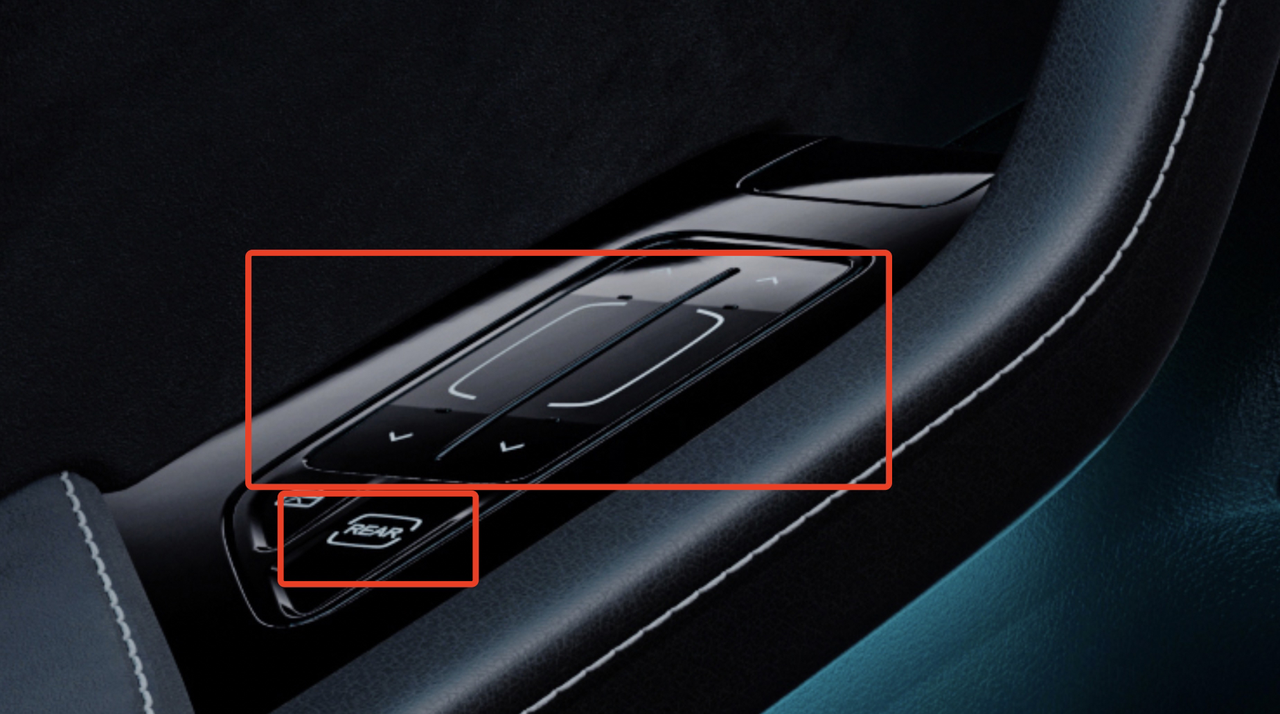
There are many opinions from users and fans on social media and Weibo regarding this design, with most people thinking it is not practical. I also asked NETA officials for confirmation. NETA officials first welcomed users’ various insights on the product. In terms of aesthetics, it is to ensure the simplicity and sense of technology of the interior, with the general idea similar to hidden door handles. And they hope everyone can look forward to the actual experience of the car.
Battery Safety is of Great Importance
The Common Topic of Battery Safety
The safety of electric vehicle power batteries is a common topic. In fact, the core of battery safety is “thermal runaway”.
This thermal runaway refers to abnormal warming and pressurization of the battery. When the heat release rate of the exothermic reaction is higher than the heat dissipation rate of the power battery, the internal pressure and temperature of the battery cell will rapidly rise, entering an uncontrollable self-heating state. If not controlled, this thermal runaway can spread and may ignite the entire battery pack.
In fact, there are many potential exothermic reactions during the normal charging and discharging process of lithium-ion batteries. Professor Ai Xinping of Wuhan University pointed out that when the battery’s temperature or voltage is too high during the charging process, exothermic reactions are more likely to occur.
The main exothermic reactions include:
- The decomposition of the SEI film at temperatures above 130 ℃ causes the electrolyte to undergo a large amount of reduction and decomposition exotherm on the exposed high-activity carbon negative electrode surface, causing the battery temperature to rise. This is the root cause of battery thermal runaway.- Exothermic decomposition of the positive electrode in the charging state, and further electrolyte decomposition induced by active oxygen, exacerbate the heat accumulation inside the battery and promote thermal runaway;
- Thermal decomposition of electrolyte causes heat release, accelerating the temperature rise of the battery;
- The reaction between binder and highly active negative electrode. The initial reaction temperature between LixC6 (lithium-based negative electrode material) and PVDF (polyvinylidene fluoride) is approximately 240℃, with a peak at 290℃ and a reaction heat of 1,500 J/g.
The thermal runaway of the battery is officially formed as organic small molecule gases are produced. Therefore, in order to reduce the risk of thermal runaway and control the spread of thermal runaway when it occurs, various manufacturers have conducted in-depth research on battery integration and management based on actual needs, and have launched their respective solutions, such as BYD’s “Blade Battery”, Great Wall’s “Dayu Battery”, EA’s “Magazine Battery”, Landtour’s “Amber”, “Mica”, and so on.
What makes “Tiangong Battery” different?
The two characters “Tiangong” first appeared in the ancient Chinese text “Shangshu” during the Pre-Qin Dynasty, meaning that superb skills naturally formed. This demonstrates the confidence of NETA in his battery technology.
Professor Ai Xinping emphasized that “to fundamentally solve the problem, new technologies such as preventing short circuit, overcharging, thermal runaway, combustion, and non-combustible electrolytes should be researched, and a battery self-exciting safety protection mechanism should be established“.
To break it down, the overall thermal stability of the battery can be improved from the design and manufacture of the cell itself, PTC overcurrent protection device, pressure safety valve, and thermal sealing diaphragm. However, under the background of “the bigger the battery, the better”, in order to pursue longer endurance, more battery cells will be packed, which will inevitably make the safety design of thermal runaway more complex.
NETA’s idea is to have a self-built system from cell selection, module protection, to thermal management and BMS.
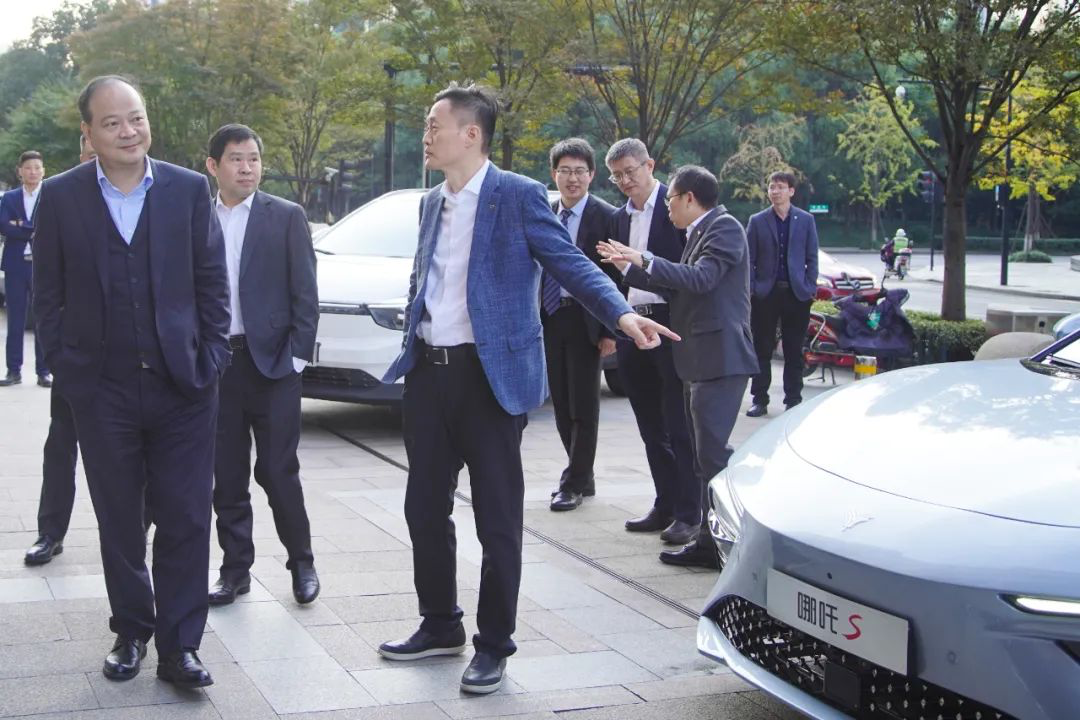
In November 2021, Ning Wang participated in NETA’s series D financing, made strategic investments in technology research and development and supply chain security, and opened up comprehensive cooperation in these areas.

Therefore, “Tiangong Battery” naturally requires more than 900 evaluation requirements for the acceptance of battery cell suppliers.
From NETA’s perspective, the fundamental reason for the classification of battery cell suppliers into first and second tiers is not the shape of the cell (cylindrical, rectangular, etc.). It is the consistency and process of manufacturing. From this perspective, large manufacturers can maintain it better, which is the essence of differentiation. Of course, this will inevitably lead to an increase in cost due to the process, and this part is something that NETA chooses to bear.
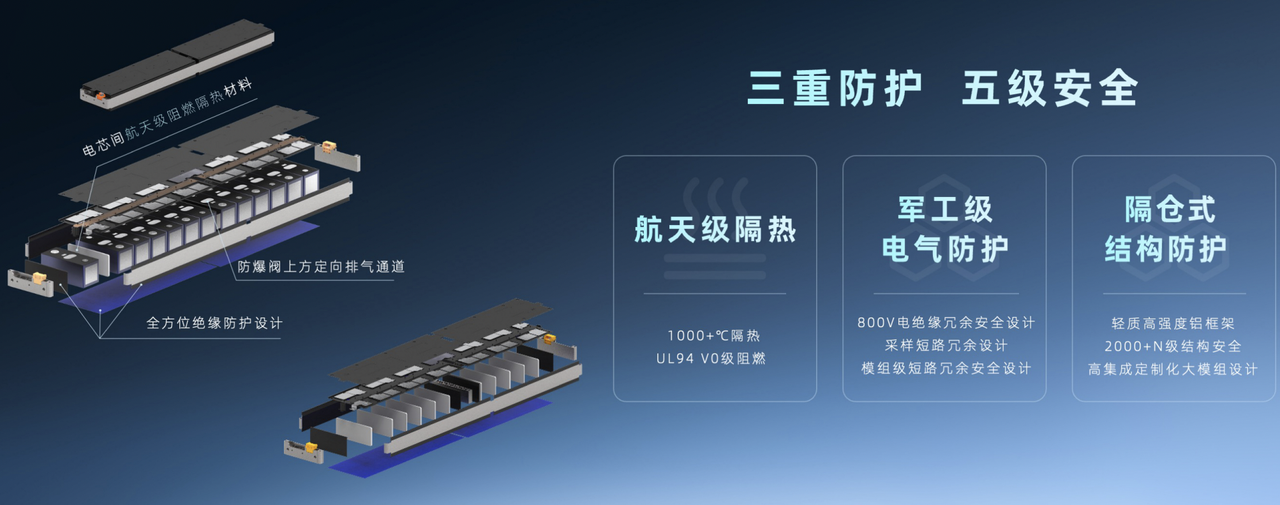 To prevent thermal runaway proliferation, NETA added flame-retardant and heat-insulating nylon material between each battery cell, achieving a heat insulation up to 1,000°C and flame retardance at UL94V0 level.
To prevent thermal runaway proliferation, NETA added flame-retardant and heat-insulating nylon material between each battery cell, achieving a heat insulation up to 1,000°C and flame retardance at UL94V0 level.
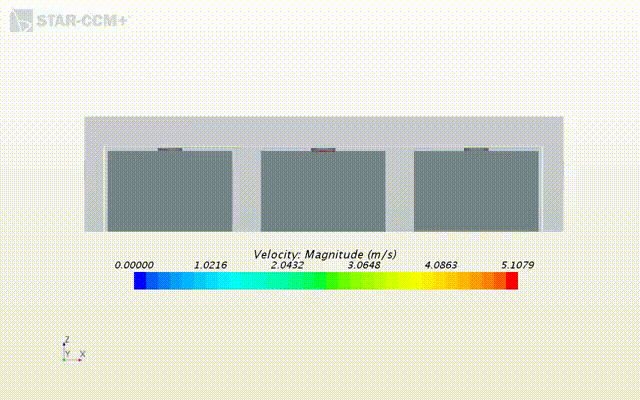
After these actions were completed, from the cross-sectional image, it can be seen that after the middle battery cell underwent thermal runaway, the gas was rapidly discharged and exploded through the pressure relief valve, and was then dissipated to the outside through the exhaust channel, resulting in cooling and depressurization of the air flow.
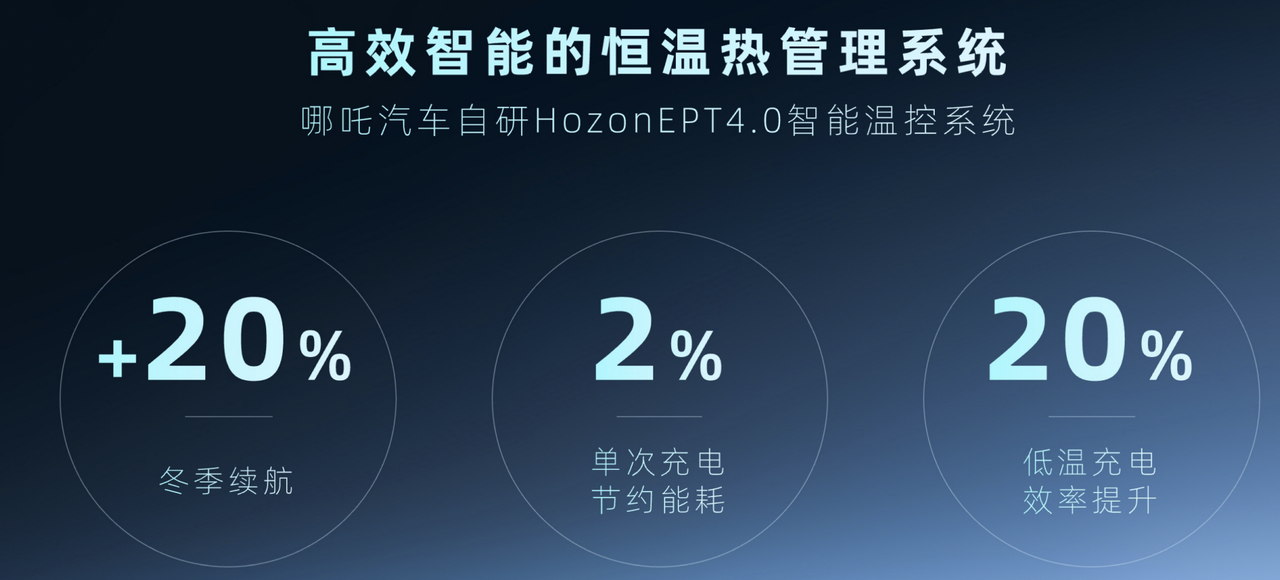
NETA’s constant temperature thermal management system is quite interesting: feedforward thermal management control, intelligent driving heating, and reservation insulation, achieving intelligent and efficient cooling and heating effects for the battery. Ultimately, it can achieve a 20\% increase in winter mileage and low-temperature efficiency, as well as 2\% energy-saving performance per single charge.

Especially for the 2\% energy-saving performance per single charge, it surprised me. Not because the effect is mediocre, but because it is difficult to explore such a precise and meticulous effect. This is also the advantage of NETA’s constant temperature management system mentioned by himself, which is the high-precision interpretation of the temperature control sensor signal, making the temperature control effect able to be precisely controlled under units of 1 W and 1 ℃.
Since NETA is divided into pure electric and extended-range versions, the pure electric version will prioritize the use of heat pump air conditioning. But both of them use the “Nine-Way Valve” to switch the heat source.
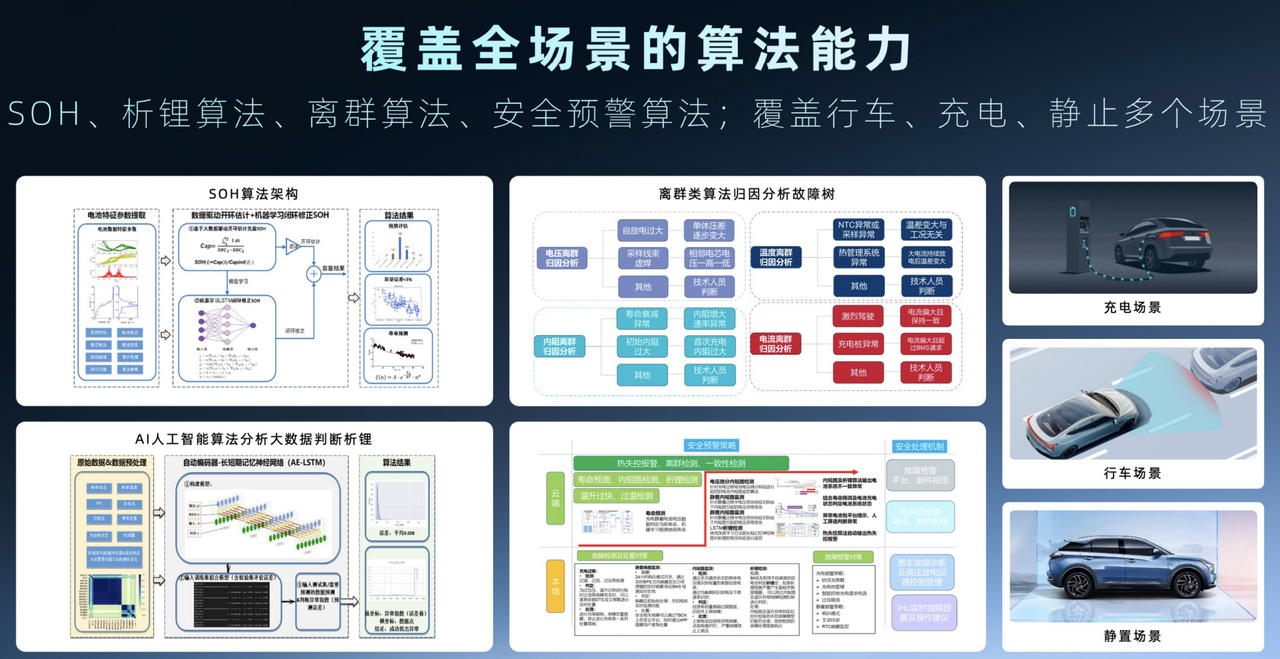
The thermal management system will also allocate the battery temperature through navigation information to achieve a balance between performance and energy saving. NETA’s goal is to achieve “a thousand people, a thousand strategies” proactive management throughout the entire lifecycle by covering various usage scenarios.
As for this part, 360 also appeared. 360 is responsible for providing big data computing platforms and is responsible for security technology support in the three aspects of cars, networks, and clouds, while NETA’s job is to leverage its algorithmic capabilities.
Actually, we are all very clear about the ideas behind managing battery thermal runaway. So I asked NETA directly whether there are specific results that can help everyone understand the level of this battery technology. The official response from NETA is to not rush, as they will carry out targeted promotion later.
ConclusionThrough online communication, which lasted for a long time, the official team of NETA has been sending me a strong signal that the brand will achieve an upward movement based on the NETA S. This reminded me of XPeng’s story. Despite the underestimation of its P7, it achieved success and became a leading brand.
I do not wish for a monopoly or a fixed “one strong and many weak” situation in the automotive market. There are many interesting features that can be found in NETA, such as the micro car, children’s car, investment share of 360, the slogan of technological equity, and of course, the adorable NETA mascot.
Regarding the frequent comparisons between the NETA S and other cars such as BYD Dolphin, Changan Shenlan SL03, and LI ONE, the official representatives of NETA are confident, stating that the vehicles are not in the same class and are not competitors.
For more information about the NETA S, readers can access our app or join the NETA S potential owners’ group.
NETA Official QA Quick Summary
Zhang Honglei, Assistant President and Deputy Director of Engineering Research Institute
Zhang Honghan, General Manager of NETA Automotive Brand Center
Ma Jiansheng, Director of Power Battery Development Department
Q1: How is the forward-type thermal management control used to preheat/cool the car according to its operation conditions?
Lei:
Firstly, the control is derived from the battery. When we are managing the thermal system, we need to consider the battery’s performance, as each battery can vary slightly. For example, the discharge capabilities of a battery at different temperatures are different. From there, we can determine the amount of energy that should be added in different situations to make the best economic decision. This is why it is called a forward-type system. You need to understand the effect of heating on the battery. For some particular scenarios, you may only get very little extra discharge when heating the battery for 20 minutes, so it is not worthwhile to heat it up. It is crucial to understand these maps.
Another aspect of the forward-type system is the algorithm for thermal management. We measure this in watts, such as when heating the batteries. If the water pump starts to work, we need to determine the amount of power consumed by the pump, as well as the amount of extra energy produced by heating the battery. This is an extreme example, as it only considers one water pump. This is measured in watts.
Lastly, we use a heat pump. For example, if the temperature is -18 degrees Celsius or 0 degrees Celsius, the heat pump’s efficiency is different. We know that the principle of heat pump air conditioning is the ability to transfer heat. The higher the temperature, the greater the ability to transfer heat. The lower the temperature, the worse the ability. However, it can still be more efficient than the PTC electric heating system. Therefore, we need to measure the difference in energy transferred at different temperatures and determine whether the amount of energy from the transported heat exceeds the impact of the excess power generated by heating the battery. This involves calculations in supply and demand, as well as in energy efficiency, and requires thousands of data points to be constantly taken to improve the algorithm and strategy.Regarding the first point about estimating refrigeration based on working conditions, it is mainly for fast charging. When we fast charge in high temperatures, we judge the current refrigeration demand based on the current charging current, the state of charge (SOC), the difference between the target cooling temperature of battery cooling, and the actual temperature of the battery. We don’t blindly cool based solely on the low inlet temperature. We estimate the refrigeration power demand based on the battery charging process and reduce refrigeration power consumption to achieve energy savings.
For the preemptive heating, there are two points. First, we determine the time to arrive at the destination based on navigation, and then we estimate how long it will take to heat up to the desired temperature based on the previously calibrated temperature rise rate during heating. Based on the current temperature of the battery, we estimate the time needed to reach the demanded temperature, which is the temperature required for fast charging. By comparing these two times, if, for example, it will take me half an hour to reach the destination but only 10 minutes to heat up, I will delay starting the heating until about 10 minutes before I arrive at the destination. Instead of starting heating at the beginning of the navigation, we start it based on the comparison between the two times, so that the temperature can reach the required value for fast charging just as we arrive at the charging station and improve charging efficiency.
Q2: Will the nine-way valve heat pump be equipped in both extended-range and pure electric versions?
Yes, our priority for the heat pump is the pure electric version, but the heat management strategy for the extended-range is the same because the heat source of the engine and the heat pump is similar. Therefore, the overall control strategy, including the design of the flow channel, is the same.
Q3: How is the CTC technology layout?
雷: (No answer provided.)Recently, we may have a release regarding a national 14th Five-Year Plan science and technology project that we obtained with Ningde in the previous year. Our vehicle engineering has been entirely frozen now, and we have already made dozens of sample cars.
Due to the significant transformation C to C brings to the original mainline process, we will have a brand new architecture by the end of next year. We will upgrade our craft on the Mountain & Sea platform and choose one of our own bases. The company will release them continuously later.
Q4: Will Tiangong’s battery completely prevent spontaneous combustion or thermal runaway?
Lei:
Actually, from the design of the battery pack, we certainly hope that it would never spontaneously combust. But, essentially, we design for three aspects of the battery’s safety: the inherent safety of the battery, including the passive and active battery pack safety.
As I mentioned earlier, inherent safety is the strict requirements for battery cell selection. The interaction of short-circuits, pressure relief, and other abnormal accidents is part of the battery’s inherent safety.
On the other hand, for passive safety, it is about maximum protection against actual squeezing conditions. New energy vehicle forces usually have wider cars than traditional manufacturers. As wide cars provide excellent energy absorption space for battery packs, we try to prevent battery packs from being squeezed. And even if squeezed, the requirements of the strength of the meshes are essential, and we avoid single cells being subject to squeezing.
Active safety is the kind of big data that BMS used for early discovery, whether it’s small issues at the cell-level or impact and water intrusion during driving.
Of course, when the teacher was expressing his hopes for Tiangong batteries not to spontaneously combust, to be candid, any product will have a PPM value. Even if it is from a super supplier that has gone through strict screening and manufacturing, it would still have defects. We aim to minimize or eliminate such discrepancies. However, it is impossible to have zero discrepancies among millions of units.
Therefore, even though the battery might experience spontaneous combustion, we prevent it from catching fire, ensure it does not create any safety risks for its customers. Additionally, we use the power of big data to proactively seek out testing scenarios that test for spontaneous combustion, among others. Therefore, preventing spontaneous combustion requires an approach that involves multiple measures, from inherently safe to passive and active measures.
Q5: How does NETA choose its battery suppliers?
Lei:From the design perspective of battery selection, as previously mentioned, we have over 900 options for battery selection. From the technical evaluation perspective, whether it is from the first tier or the second tier, these criteria must be met in order to be included in the system.
From a technical perspective, batteries undergo iterations and new products. Of course, first tier battery suppliers will have an advantage, as they are at the forefront. However, such as with widely used ternary and lithium iron phosphate systems, from a research and development perspective, there is no essential difference in the abilities of the first and second tiers in terms of their materials systems, sources, suppliers, and formulations.
Of course, in some cases such as the design of new material batteries, such as cobalt-free designs in the future, those first tier suppliers initially have better technology and as a result achieve better performance. They are divided into two stages, such as the commonly used ternary and lithium iron phosphate systems currently in use. As long as these systems are evaluated, there is no essential difference in research and development between the first and second tiers because their supply chains, materials, systems, and methods are almost the same.
The second point is manufacturing consistency, where the real ability of the first and second tiers is reflected. Because batteries are complex in some ways but not complex in others. For example, most of the materials and suppliers used are the same and come from several large companies. Why are the products different? This is due to the ability of the production process, the ability of consistency, and the cost-effectiveness of the process and consistency are also the costs of the battery. So, this is where the real abilities of the first and second tiers can be experienced. Of course, the suppliers chosen by Hozon must meet Hozon’s requirements, and I’m focused on these two directions.
Q6: Why was the electric range set to 300 km for extended-range models?
Lei:
Actually, Hozon has always wanted to promote the concept of electric vehicles. In addition to the extended-range mode, we also hope that customers can use our vehicles without depleting their battery, just like most of our previous competitors who purchased our vehicles as hybrids and rarely charged them. We also bought a hybrid for our company’s public transportation, which at the time required a quota to be met by having a hybrid. We also used it as a hybrid vehicle and were ordered by the government to rectify the situation due to the inconvenience of charging in Shanghai. In order to obtain this quota, most people who bought hybrids used them as hybrids and rarely charged them. However, Hozon still hopes to encourage customers to use our vehicles as fully electric vehicles.
Why did we choose 300 km? We also analyzed big data. We looked at our own models and those of our competitors, and currently, 400 km is the best-selling range for vehicles, such as our V and U models and those of our competitors. So, why 400 km?From the perspective of big data, it’s basically enough for customers to use our vehicle for almost a week because the average daily driving radius is about 60 kilometers, slightly more on average because of the impact of energy consumption from air conditioning. Therefore, most people will choose a range of around 400 kilometers.
Why is the range of our pure electric vehicle 300 kilometers? Because people have a habit. Based on big data analysis, when the state of charge (SOC) is at 30%, most people will go to charge it, and few will use it until it runs out of battery. Our pure electric vehicle can run out of battery completely because it has a range extender which means it’s equivalent to a range of 400 kilometers for the electric-only version in terms of mileage and user experience. Because it has a range extender, it’s not afraid of running out of battery, and it can still run with the range extender after the battery is empty.
Why do we choose range extender now?
Actually, the company has discussed and debated over range extender products before. With the cost of batteries slowly decreasing, the cost trend of range extender is not obvious. Range extender only solves the anxiety of travel distance for customers who live in cities with inconvenient charging. However, this is not enough. Recently, we found that due to the increase of battery costs, it seems that range extender has more cost advantages than battery systems which were previously forecasted to be done at a cost of 50 cents. Currently, because of national energy storage development and the development of hybrid vehicles, battery materials are far from enough. Therefore, we haven’t seen a significant decrease in the price of batteries which was forecasted a while ago, but we can see the cost trend of range extender instead. In conclusion, we hope to provide customers with a pure electric experience that can solve their anxiety about driving distance, and with range extender, customers can have better use costs.
Q7: About the skateboard chassis of Ne Zha.
Lei:
Our SH platform is also in the process of evolution. We think that the ultimate form of the SH platform in Shanghai will be a skateboard chassis.
Regarding the skateboard chassis, from the perspective of the entire vehicle, the most important thing is its future platform architecture and extensibility. It will be better than the current load-bearing body in terms of the range of adjustment of the wheelbase and track. Therefore, everyone hopes that the future skateboard chassis will become a standardized product, and a car body can be attached to it easily. Of course, this is a very optimistic state, but it is still possible. The first thing we consider for the skateboard chassis is from the perspective of the entire vehicle, to make it standardized and platform-based and have better bandwidth capabilities.In the future, whether we are talking about the three-electric (powertrain, battery, electric control), driving or the cockpit, they may all be the main focuses of the integrated architecture formed by the skateboard chassis. So in the future, we may need to make corresponding adjustments to the shape and market of cars based on the development of customers or the industry.
We can see that nowadays, mobile phones are becoming more and more homogeneous, it is difficult to see any significant new differences or innovations. Of course, cars are different from mobile phones as there are many cultural and styling concepts that can be applied. However, from the perspective of configuration and performance, mobile phones have no significant differences. In the future, cars should also be standardized in terms of functionality, but in terms of some customer demands, such as software experience, including mobile phones. What makes cars unique is the experience brought by the software. Of course, cars will also have styling and cultural concepts, which are slightly different from mobile phones. Therefore, building a skateboard chassis is a platform-based standardization concept.
Secondly, from the perspective of battery protection, the skateboard chassis may have better advantages in terms of space and protection for the battery than the existing architecture. I also mentioned earlier why there are too many new forces in the traditional car-making industry, as traditional cars are relatively narrow and limited by their original chassis system and their own production lines. For example, imagine a car that is split in half from its wheelbase, and there are few parts that can be modified. But if the car is split in half from its central axis, all the components on the car will need to be modified. This is a high challenge for the original system platform, including process adjustments. However, these two architectures still have limitations on the space of the battery, but the utilization rate and protective ability of the battery for the skateboard chassis will be more friendly. In fact, the skateboard chassis of UNI-V is designed based on these two aspects, but we are not pursuing technology just for the sake of technology.
This article is a translation by ChatGPT of a Chinese report from 42HOW. If you have any questions about it, please email bd@42how.com.
